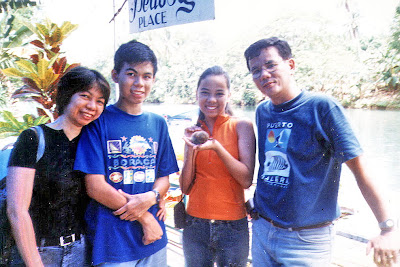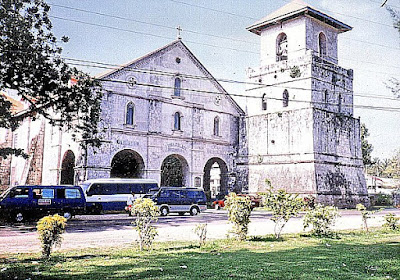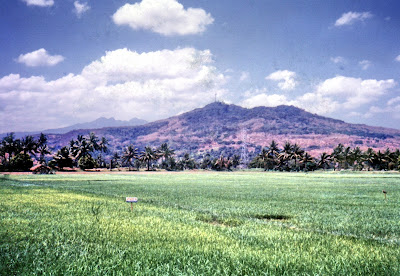 |
| Bonding with a tarsier |
After our tour of Chocolate Hills, we retraced our way back south to the town of Loboc where we were to take a buffet lunch on board 1 of 5 floating restaurants as we took a 30-min. cruise along the scenic, palm-fringed Loboc River. While waiting for our boat to arrive, we made a visit to nearby Pedboy’s Place for an unusual bonding (and pictorial) with another Bohol favorite: the tarsier (Tarsius syrichta). If there was an animal that could be fittingly be called Bohol’s mascot, the tarsier would be it. Jandy and Cheska, as well as their cousins Gelo and Matthew, enjoyed having their pictures taken with cute and furry creatures on their head, shoulders and arms. The adults, including Mike, followed suit, but Grace begged off .
Author’s Notes
Days after our Bohol trip, I got to thinking, “What are these nocturnal, forest-loving tarsiers doing out here in the daytime and in an urban setting?” The tarsier is now endangered because of the destruction of its forest habitat, predation by house cats and illegal hunting of tarsiers for pets or trade. It is my hope that the display of this truly delightful, but now captive, primate does more good than harm. Maybe it would open the eyes of visitors to the sorry plight of this endangered species. Or maybe not…























